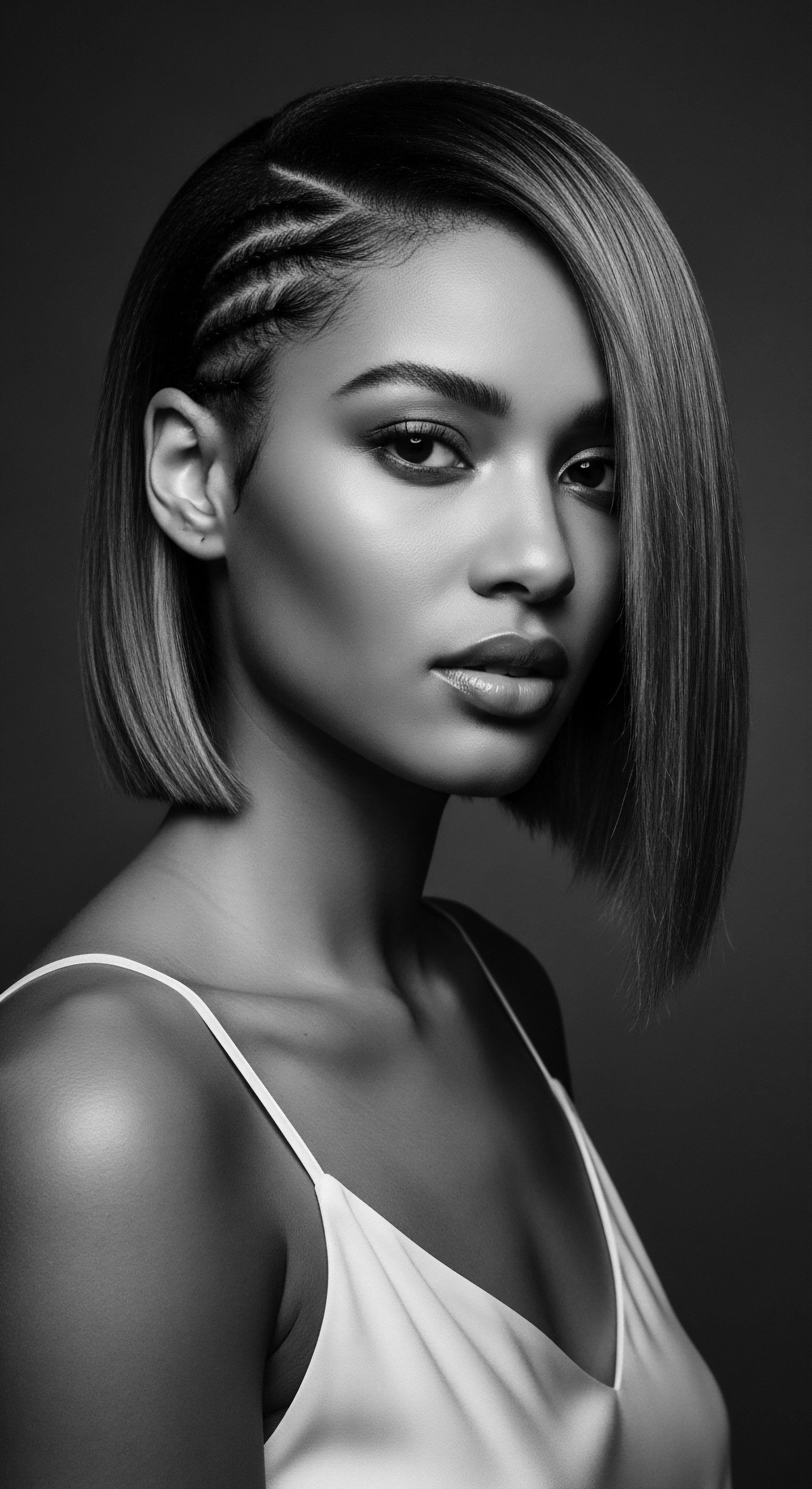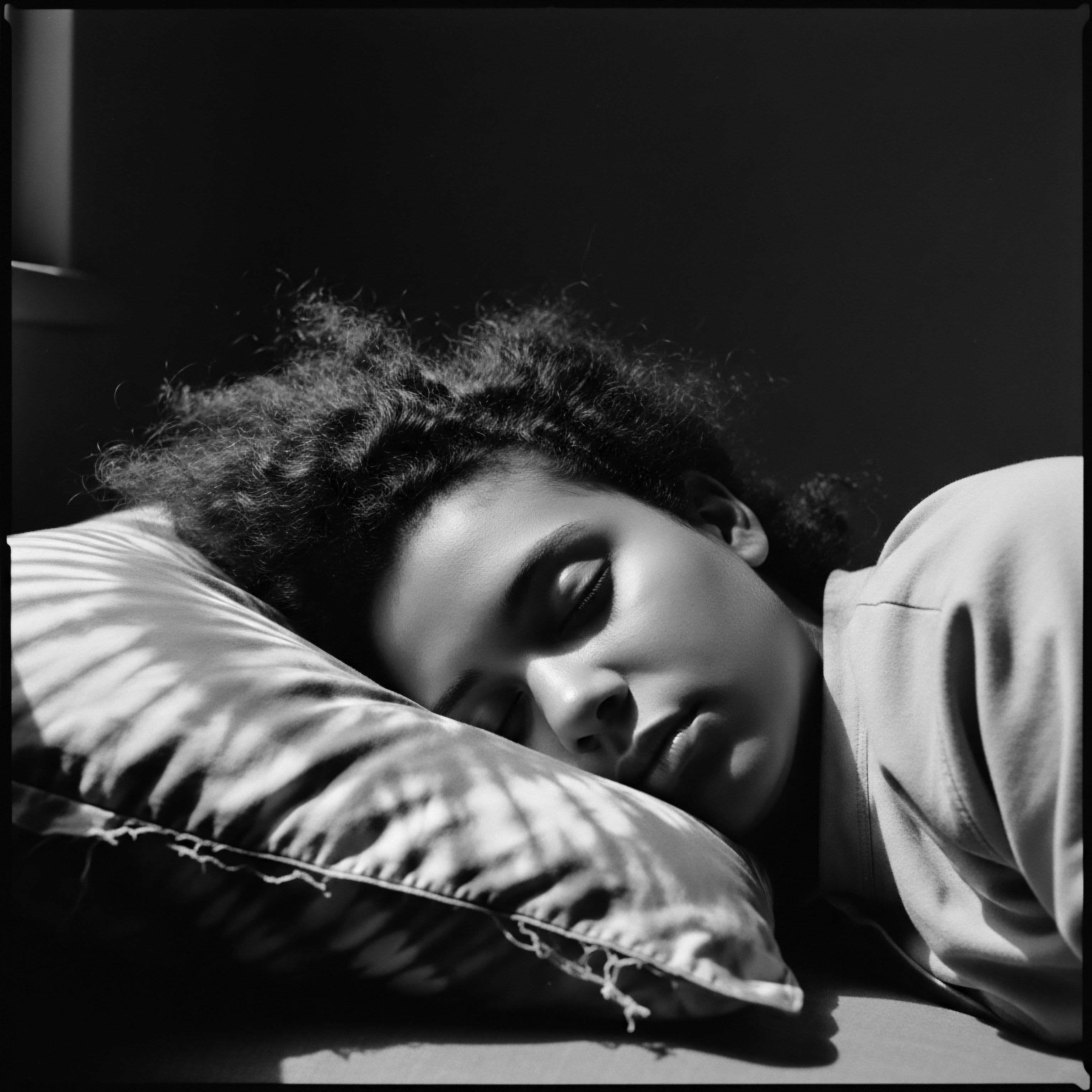
Do ancient protective styles still benefit textured hair today?
Ancient protective styles continue to shield textured hair from damage, preserving its heritage and promoting growth.

What historical adaptations preserved textured hair health?
Historical adaptations preserved textured hair health through natural ingredients, protective styling, and communal care rooted in ancestral wisdom.

How did ancient protective styles benefit textured hair?
Ancient protective styles, rooted in heritage, shielded textured hair from elements, reduced manipulation, and retained moisture, preserving vitality across generations.

How does heritage inform modern textured hair oiling for deep nourishment?
Textured hair oiling roots in ancestral practices that intuitively nourished coils, revealing deep heritage connections in modern care.

How did hair moisturizing aid cultural survival?
Hair moisturizing, historically and currently, served as a foundational practice for sustaining textured hair health, deeply interwoven with cultural identity and communal resilience across Black and mixed-race heritage.

What ancestral hair practices continue to inform modern textured hair care for mixed communities?
Ancestral hair practices offer a living heritage of care, deeply informing modern textured hair routines with timeless wisdom for resilience and identity.

How did ancestral hair practices influence modern protective styles?
Ancestral hair practices, rooted in heritage, shape modern protective styles by prioritizing hair health, identity, and cultural continuity.

How has traditional care impacted textured hair?
Traditional care has profoundly shaped textured hair by serving as a cultural bedrock, preserving identity, and nurturing its unique biology across generations.

What ancestral knowledge influences modern hair care for textured hair?
Ancestral knowledge guides modern textured hair care through deep heritage, focusing on natural properties, protective styles, and botanical wisdom.

Can traditional textured hair practices influence modern holistic health?
Traditional textured hair practices profoundly influence modern holistic health by connecting us to ancestral wisdom and fostering communal well-being.

Why do textured hair rituals hold cultural significance?
Textured hair rituals affirm identity, transmit ancestral wisdom, and honor the deep heritage of Black and mixed-race communities.

What ancestral knowledge informs modern textured hair wellness?
Ancestral knowledge guides modern textured hair wellness through heritage practices of protection, natural ingredients, and communal care.

How did ancient cultures hydrate textured hair in arid climates?
Ancient cultures hydrated textured hair in arid climates using natural oils, butters, and mineral clays as occlusive and protective agents.

Can historical hair practices inform modern moisture routines for textured hair?
Historical hair practices provide a profound blueprint for modern moisture routines, directly connecting current hydration strategies to ancestral wisdom and textured hair heritage.

What ancestral hair practices sustained textured hair strength through generations?
Ancestral practices, deeply rooted in communal care and natural wisdom, sustained textured hair strength through generations.

Which plant-derived ingredients sustained textured hair in the diaspora?
Plant-derived ingredients, deeply rooted in ancestral wisdom, sustained textured hair across the diaspora by offering moisture, protection, and vital nourishment.

In what ways did cultural heritage influence textured hair care?
Cultural heritage profoundly guides textured hair care through ancestral wisdom, traditional ingredients, and resilient communal practices.

How do historical bonnets protect textured hair?
Historical bonnets protected textured hair by reducing friction, retaining moisture, and preserving styles, a practice deeply rooted in Black hair heritage and ancestral wisdom.

What is the heritage of hair protection in Black communities?
The heritage of hair protection in Black communities stems from ancestral practices that safeguard textured hair, linking beauty to cultural survival.

Sleep Protection Hair
Meaning ❉ Sleep Protection Hair encompasses cultural and scientific practices to safeguard textured hair during rest, preserving its health and historical integrity.

How did Nile Valley practices influence textured hair protection?
Nile Valley practices safeguarded textured hair through ancestral wisdom, using natural elements and protective styles to maintain health and cultural meaning.

How did ancestral practices address dry textured hair?
Ancestral practices addressed dry textured hair through nature's emollients, protective styles, and communal, holistic care, preserving heritage.

What traditional methods supported textured hair’s resilience during historical hardship?
Traditional methods safeguarded textured hair through ancestral wisdom, natural ingredients, and protective styling, reflecting deep heritage and resilience.

In what ways do Kemetian hair rituals inform modern care for textured hair?
Kemetian hair rituals inform modern textured hair care through their enduring wisdom in protective styling, natural ingredients, and holistic wellness.

Which historical methods protected textured hair from environmental elements?
Ancestral methods protected textured hair from elements using styles, coverings, and natural ingredients, deeply tied to cultural heritage and resilience.

Why does heritage guide textured hair protection?
Heritage guides textured hair protection by providing centuries of ancestral wisdom on care, styling, and preservation strategies.

Can heritage practices influence textured hair growth?
Heritage practices, through protective styling and nutrient-rich rituals, profoundly support textured hair growth by fostering retention and scalp health.

Why are protective styles important for Black hair heritage?
Protective styles are essential for Black hair heritage, safeguarding delicate textures while preserving a rich lineage of identity and cultural resilience.

How do historical protective styles connect to identity?
Historical protective styles embody identity by preserving ancestral practices and serving as a visual language of heritage and resilience for textured hair.

